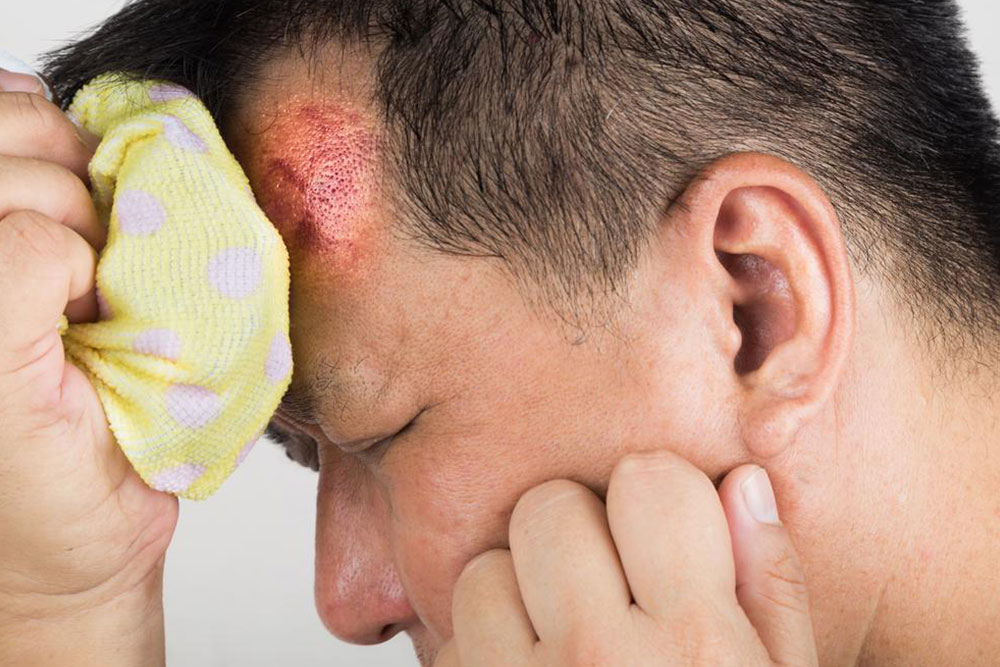Comprehensive Guide to Recognizing Concussion Symptoms for Your Safety and Prevention
This comprehensive guide emphasizes the importance of recognizing concussion symptoms for safety and effective prevention. It details the various severity levels, key signs to watch for, and preventive measures to reduce risks of brain injuries, especially in sports and daily activities. Knowing when to seek medical help can prevent serious complications and promote quicker recovery, making this an essential resource for everyone concerned with brain health and injury prevention.

Comprehensive Guide to Recognizing Concussion Symptoms for Your Safety and Prevention
A concussion is a type of traumatic brain injury that results from a sudden impact or jolt to the head or body, causing the brain to move rapidly within the skull. While many concussions are mild and recoverable, understanding the different levels of severity is crucial for ensuring proper care and preventing further injury. In this article, we will explore the various symptoms associated with each level of concussion, how to identify them early, and what preventive measures you can take to protect yourself and your loved ones.
Concussions are classified into three levels based on the severity of symptoms and the impact of the injury:
Level 1: Mild Concussion
Level 2: Moderate Concussion
Level 3: Severe Concussion
Understanding the Severity Levels of Concussion
Level 1: Mild Concussion
This is the most common type of concussion. It is characterized by symptoms that last less than 15 minutes and do not involve loss of consciousness. These symptoms often include headache, dizziness, or brief confusion, which typically resolve within a short period. Although considered minor, it is essential not to ignore a mild concussion as it can still have cumulative effects if ignored or left untreated.
Level 2: Moderate Concussion
If symptoms persist beyond 15 minutes but there is no loss of consciousness, the injury is classified as moderate. Symptoms can include more pronounced confusion, memory difficulties, difficulty concentrating, and disorientation. This level often requires medical assessment to rule out more serious brain injuries and to facilitate proper recovery.
Level 3: Severe Concussion
The most serious form involves a temporary loss of consciousness, which may last only seconds but indicates a significant impact on the brain. Symptoms in this category can include persistent confusion, vomiting, seizures, and in extreme cases, unconsciousness lasting longer. Immediate medical attention is critical to prevent long-term damage or life-threatening complications.
Recognizing Concussion Symptoms
Most concussions are not immediately obvious and may develop symptoms hours or even days after the injury. Early detection is vital for effective treatment, reducing the risk of complications. Recognizing signs promptly can be life-saving and help ensure proper medical intervention.
Feeling dazed or confused
Clumsiness or difficulty maintaining balance
Nausea or vomiting
Problems with speech or slurred speech
Blurred or double vision
Sensitivity to light and noise
Ringing in the ears
Changes in personality or behavior
Difficulty concentrating or focusing
Memory lapses or confusion
How to Manage and Respond to a Concussion
When a head injury occurs, the first priority is to monitor for signs of severity. If the individual exhibits any symptoms of a severe concussion, especially loss of consciousness or persistent disorientation, immediate medical attention is necessary. While mild concussions often resolve on their own, rest and proper care are critical for recovery.
Management strategies include:
Ceasing physical activities and rest
Avoiding screen time or intense mental activities
Monitoring symptoms closely for any changes
Seeking medical evaluation for persistent or worsening symptoms
It’s essential to remember that even mild concussions should be taken seriously; improper care can lead to prolonged symptoms or secondary injuries.
Preventing Concussions
Prevention is the best approach to avoiding concussion-related injuries. Some practical measures include:
Wearing appropriate protective gear such as helmets when engaging in high-risk sports or cycling
Using seatbelts while driving or riding in vehicles
Avoiding risky behaviors that may lead to head impacts
Ensuring safety measures in workplaces and recreational facilities
Staying calm and aware after an incident, even if symptoms seem minor
Although it’s impossible to prevent all head injuries, adopting a cautious attitude and following safety protocols significantly reduce the risk and severity of concussions.
In conclusion, understanding the signs and severity levels of concussions empowers individuals to seek prompt medical attention, ensuring better outcomes and reduced long-term effects. If you or someone you know experiences a head injury, always err on the side of caution and consult healthcare professionals for comprehensive assessment and care.





